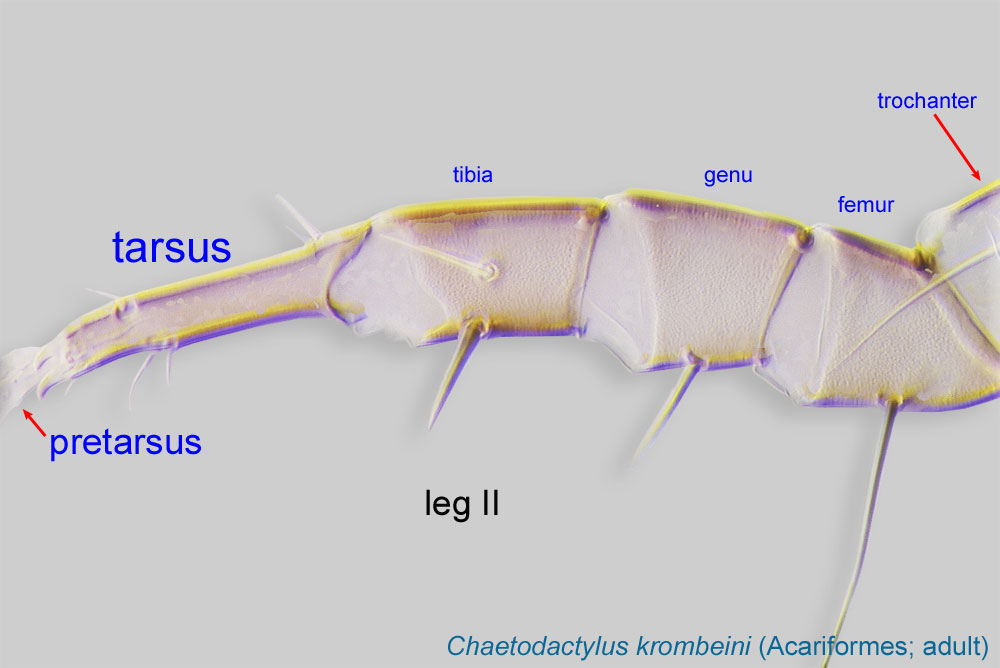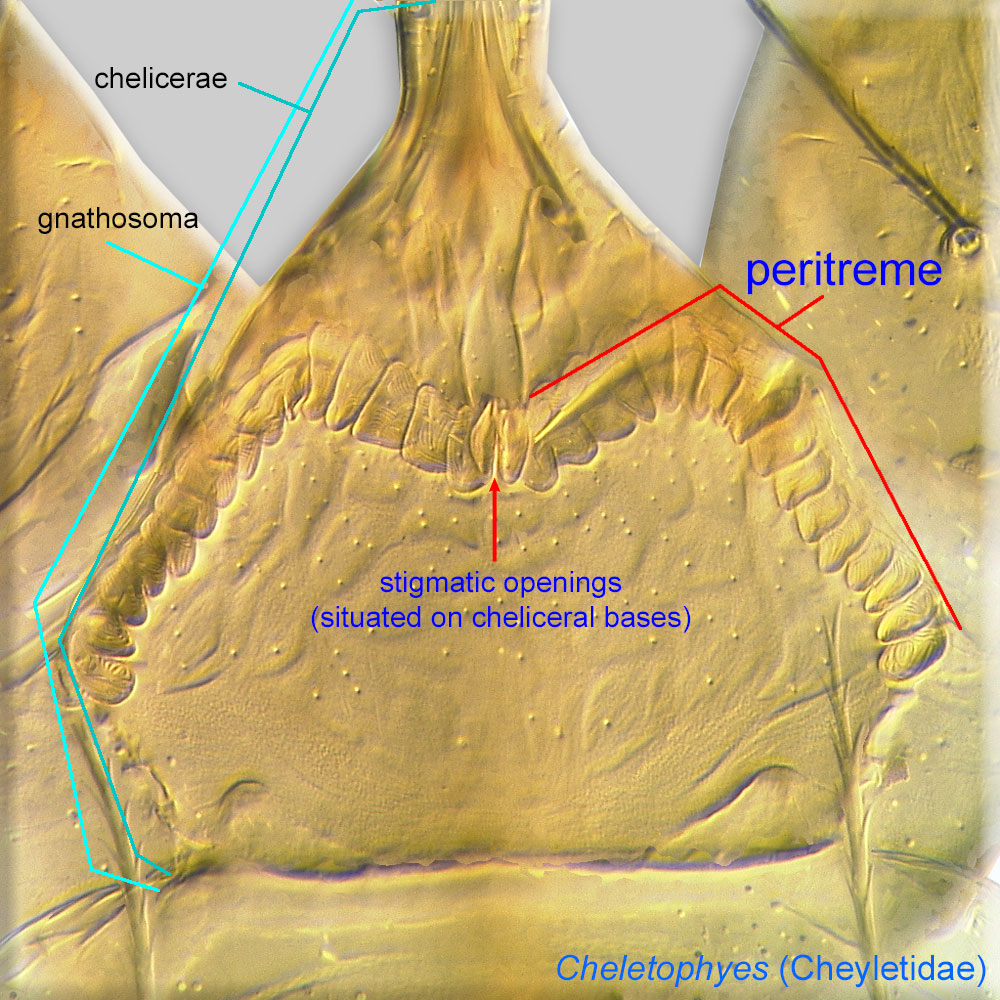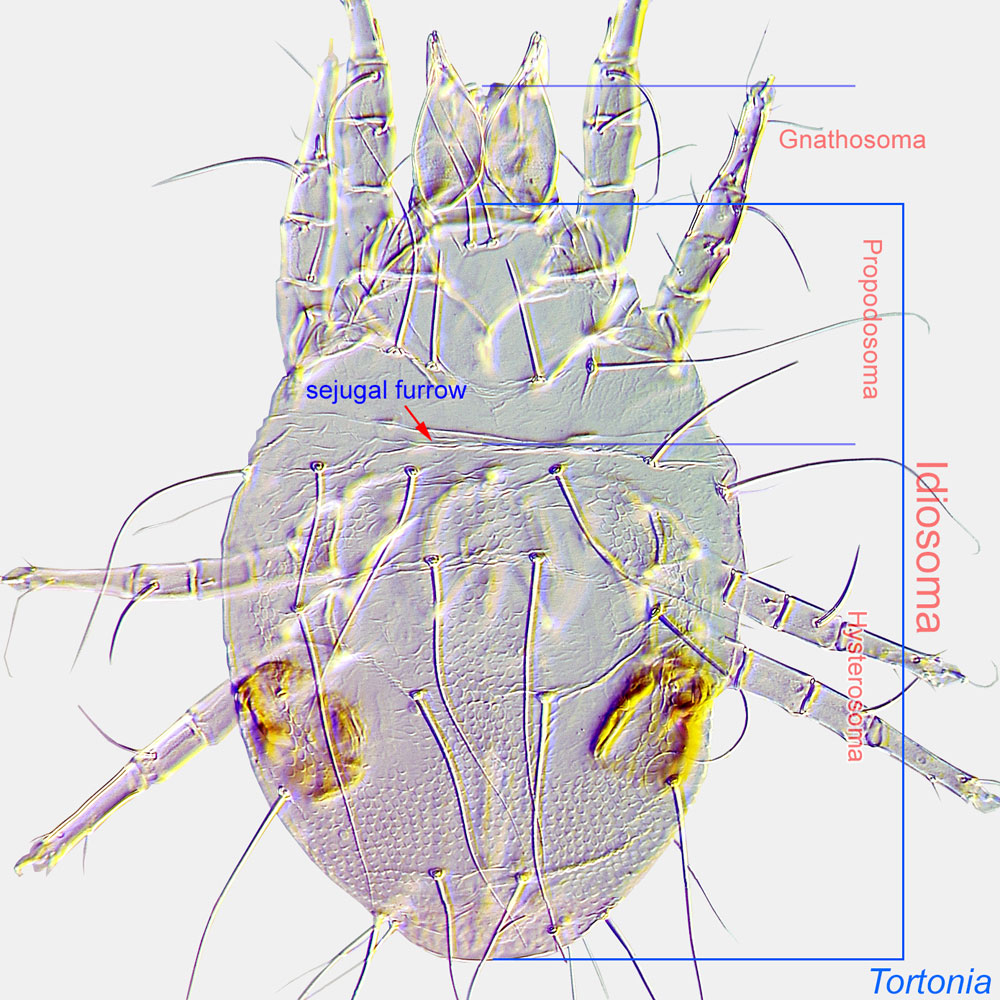lives in bee nests; details of biology unknown
Trigonholaspis Vitzthum, 1930Vitzthum, 1930:
Vitzthum, H. G. 1930. Acarologische Beobachtungen. (14 Reihe.). Zoologische Jahrbücher. Abteilung für Systematik, Geographie und Biologie der Tiere 281-350.
Superorder Parasitiformes » Order Mesostigmata » Suborder Monogynaspida » Hyporder Dermanyssiae » Family Macrochelidae » Genus Trigonholaspis
Trigonholaspis salti Vitzthum, 1930Vitzthum, 1930:
Vitzthum, H. G. 1930. Acarologische Beobachtungen. (14 Reihe.). Zoologische Jahrbücher. Abteilung für Systematik, Geographie und Biologie der Tiere 281-350.
Grafia Krantz, 1962Krantz, 1962:
Krantz, G. W. 1962. A review of the genera of the family Macrochelidae Vitzthum 1930 (Acarina: Mesostigmata). Acarologia 4: 143-173.
Female: Claws or ambulacraambulacrum:
The claws and empodium of the apotele or pretarsus.
on leg I absent but present on tarsitarsus:
Terminal segment (also known as podomere or palpomere) of legs or palps. In Parasitoformes it can be subdivided into telotarsus and basitarsus.
 II-IV (Fig. 1). Two brushes present at base of movable digit (Fig. 2). Peritremeperitreme:
II-IV (Fig. 1). Two brushes present at base of movable digit (Fig. 2). Peritremeperitreme:
Paired, tubular, elaborated extensions of a tracheal system associated with stigmatic openings. Can be chambered, arch-like, and situated on the bases of chelicerae as in Cheyletidae (Prostigmata) or, in Mesostigmata, linear and situated on the lateral sides of the body.
 looped and enters stigma posteriorly (Figs. 2, 4). Trigonholaspis can be distinguished from all other macrochelid genera by the presence of four pairs of opisthonotalopisthonotal:
looped and enters stigma posteriorly (Figs. 2, 4). Trigonholaspis can be distinguished from all other macrochelid genera by the presence of four pairs of opisthonotalopisthonotal:
Pertaining to dorsal opisthosoma.
dorsocentral setae (J1, J2, J3, J5) (Fig. 1) and by the presence of dorsal "hump" on the idiosomaidiosoma:
Body not including the gnathosoma.
 (Fig. 1). In other macrochelids, there are two, rarely three, pairs of opisthonotalopisthonotal:
(Fig. 1). In other macrochelids, there are two, rarely three, pairs of opisthonotalopisthonotal:
Pertaining to dorsal opisthosoma.
dorsocentral setae and the "hump" is absent.
The four known species, all from the nest of Trigona amalthea (Apidae: Meliponini) from Colombia, can be identified using the original descriptions (Vitzthum, 1930Vitzthum, 1930:
Vitzthum, H. G. 1930. Acarologische Beobachtungen. (14 Reihe.). Zoologische Jahrbücher. Abteilung für Systematik, Geographie und Biologie der Tiere 281-350.). In addition, there is a relatively large number of undescribed species. For example, five new species have been reported from Brazil (Krantz, 1998bKrantz, 1998b:
Krantz, G. W. 1998b. Observations on five rarely collected genera of Macrochelidae (Acari: Mesostigmata) associated with insects. Acarologia. 39: 95-109.) and one from Panama (our data).
Neotropical region
stingless bees (Meliponini)
permanentpermanent:
associated exclusively with bees or their close relative, wasps; cannot live without these hosts
The biology of this group is virtually unknown. Salt reported his observations on several species of Trigonholaspis associated with Trigona amalthea (Salt, 1929Salt, 1929:
Salt, G. 1929. A contribution to the ethology of the Meliponinae. Transactions of the Entomological Society of London.77: 431-468+29 Plates.), though multiple mite species were likely present. He found that Trigonholaspis was very abundant on combs but not on pollen- and honey-pots. In a few cases, mites were found inside closed cells. Of them, one mite was attached to the middle leg of the bee pupa.